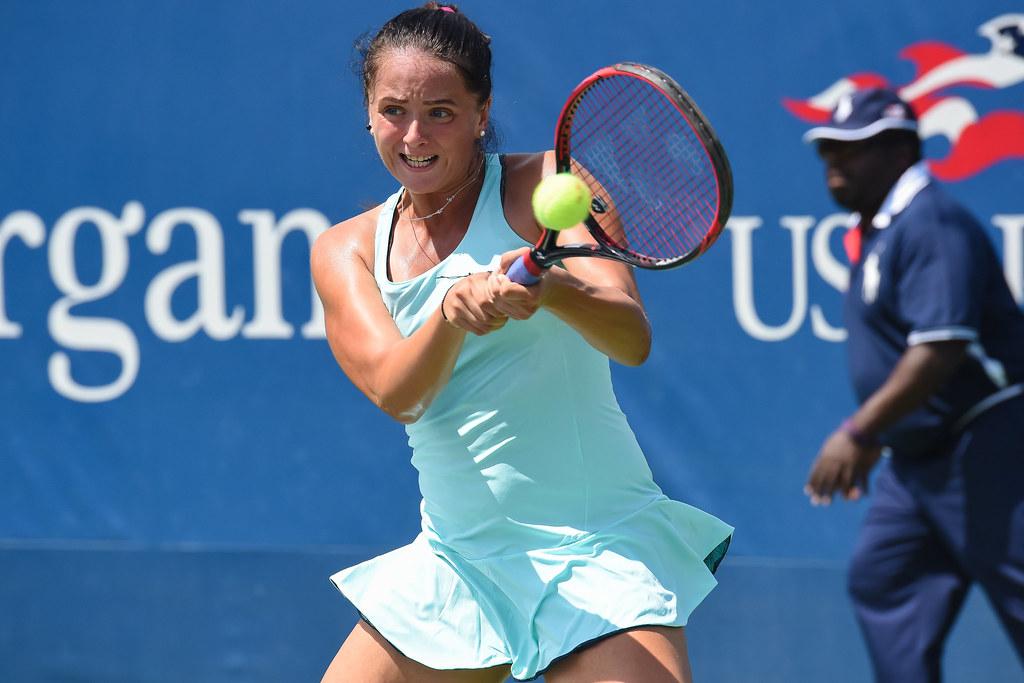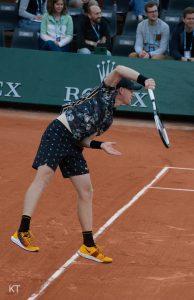We may earn money or products from the companies mentioned in this post.
Introduction to the US Open Tennis

The US Open Tennis is one of the most prestigious and highly anticipated tennis tournaments in the world With a rich history, immense importance, and a rigorous qualification process, this event captivates both players and fans alike
A Brief History of the US Open
The US Open has a storied past that dates back over a century It all began in 1881 when the tournament was known as the National Championship Originally played on grass courts, it eventually transitioned to clay before settling on hard courts in 1978
Over the years, the tournament evolved and grew in popularity In 1968, it became an open competition, allowing both amateur and professional players to participate This move not only increased its global appeal but also paved the way for some iconic matches between tennis legends
Importance of the Tournament in the Tennis World
The US Open holds immense significance within the tennis community As one of four Grand Slam tournaments alongside Wimbledon, Roland Garros (French Open), and Australian Open, it represents an opportunity for players to cement their place in history and showcase their skills on a global stage
Winning the US Open means joining an elite group of champions who have left an indelible mark on tennis history From Billie Jean King’s iconic Battle of Sexes against Bobby Riggs to Serena Williams’ record-breaking achievements, this tournament has witnessed countless moments that will forever be etched in our memories
Overview of the Qualification Process
Gaining entry into the US Open is no easy feat The qualification process involves various pathways for both professional players and rising talents seeking their breakthrough moment
For top-ranked players on the ATP and WTA tours, direct entry is based on their rankings The remaining spots are filled through a combination of wildcards, which are given to players at the discretion of tournament organizers, and qualifying rounds where players compete for a place in the main draw
Additionally, there are opportunities for up-and-coming players to secure a spot through wildcards provided by national tennis associations or by winning tournaments specifically designated as qualifiers for the US Open
Overall, the qualification process ensures that only the most deserving and skilled athletes get to compete in one of tennis’ most prestigious events, making each match highly competitive and thrilling for both players and spectators
Understanding the Qualification Criteria for Players

When it comes to tennis tournaments, understanding the qualification criteria for players is essential Let’s dive into the various factors that determine a player’s eligibility and entry methods
Professional versus Amateur Players
In tennis, there is a distinction between professional and amateur players This differentiation plays a role in determining eligibility for certain tournaments
-
Age Requirements and Restrictions:
Age is an important factor when it comes to professional tennis Different tournaments have specific age requirements for participation, ensuring fair competition among players of similar experience levels -
Membership in Professional Associations (ATP, WTA):
To be considered a professional player, one must be a member of either the Association of Tennis Professionals (ATP) or the Women’s Tennis Association (WTA). These associations govern the sport at the highest level and provide rankings and tournament opportunities for their members
Entry Methods for Singles and Doubles Events
Tennis tournaments offer different entry methods depending on whether a player is participating in singles or doubles events
-
Direct Acceptance Based on Rankings:
One way players can secure their spot in a tournament is through direct acceptance based on their rankings Both ATP and WTA have ranking cut-offs that determine which players are eligible to enter certain events - a) ATP/WTA Ranking Cut-offs: The ranking cut-offs vary from tournament to tournament, with higher-ranked players receiving automatic entry into prestigious events while lower-ranked players may need to go through qualifying rounds or wildcards (more on this later).
- b) Grand Slam Champions’ Exemption: Grand Slam champions are exempt from ranking requirements and can enter tournaments regardless of their current ranking This exemption acknowledges the achievements of these accomplished players
-
Wildcards:
Tournament organizers also have the discretion to award wildcards, which grant entry to players who may not meet the ranking cut-offs but possess exceptional talent or potential - a) Criteria for Wildcard Selections: The criteria for wildcard selections vary across tournaments Organizers often consider factors such as past performance, local representation, or emerging talents when deciding who receives a wildcard
- b) National/Regional Wildcard Playoffs: In some cases, national or regional wildcard playoffs are held to determine which players will receive wildcards for specific events These playoffs showcase the skills of up-and-coming players and provide them with a chance to earn a coveted spot in the main draw
-
Qualifying Tournament:
For players who do not meet direct acceptance or wildcard criteria, there is often a qualifying tournament This pre-tournament event allows participants to compete for remaining spots in the main draw by battling against other hopefuls
Understanding these qualification criteria provides insight into how tennis tournaments ensure fair competition while also providing opportunities for emerging talents to showcase their skills on a global stage
How to Participate in the Qualifying Tournament

If you’re a tennis enthusiast looking to showcase your skills and compete at a higher level, participating in a qualifying tournament is an excellent opportunity However, before diving into the world of competitive tennis, there are several crucial steps you need to take to ensure a smooth journey
Preparation Steps for Interested Players
1 Ensure Eligibility According to USTA Rules:
Before embarking on your qualifying tournament journey, familiarize yourself with the eligibility criteria set by the United States Tennis Association (USTA). These rules determine factors such as age restrictions, residency requirements, and playing level Make sure you meet all the necessary qualifications to participate
2 Sign Up for an International Tennis Number (ITN):
An International Tennis Number (ITN) is a unique identifier that allows players from different countries to compare their skill levels By signing up for an ITN, you’ll have a standardized rating that can be used across various tournaments and competitions It’s essential to obtain this number before entering any qualifying tournaments
3 Registering for ITF IPIN Membership:
The International Tennis Federation (ITF) requires players participating in its tournaments to hold an ITF IPIN membership This membership provides access to player profiles, rankings, and entry into official ITF events worldwide Registering for ITF IPIN membership ensures you’re fully equipped to partake in qualifying tournaments sanctioned by the IT
Qualifying Tournament Structure
1 Number of Available Spots in Main Draw:
The number of available spots in the main draw of the qualifying tournament may vary depending on factors such as tournament size and competitiveness The main draw typically consists of a specific number of players who successfully navigate through the qualifying rounds Knowing the number of spots available will give you an idea of your chances and what you need to accomplish to secure a place
2 Format and Schedule of Matches:
The format and schedule of matches in a qualifying tournament can vary, but they typically consist of knockout rounds Players compete against each other, with the winners advancing to the next round until the final qualifiers for the main draw are determined The schedule may span several days or weeks, depending on the tournament’s structure and duration
3 Seeding System and Draws:
In some qualifying tournaments, a seeding system is implemented based on player rankings or previous performance This system aims to ensure that top-ranked players are distributed evenly across the draw, reducing early clashes between strong competitors Familiarize yourself with how the seeding process works in your specific tournament to understand potential matchups and determine your path towards qualification
By following these preparation steps and understanding the structure of qualifying tournaments, you’ll be well-equipped to embark on your competitive tennis journey Remember to stay focused, train hard, and embrace every opportunity as you strive to make your mark in this exciting sport!
Tips and Advice for Aspiring Participants

Improving Your Game to Increase Chances of Success
When it comes to tennis, honing your skills is crucial in order to stand out from the competition One effective way to improve your game is by training with experienced coaches who can provide you with valuable insights and guidance These seasoned professionals have a wealth of knowledge and can help you refine your technique, strategy, and overall performance on the court
In addition to training, participating in competitive tournaments is essential for growth These events offer an opportunity to test your skills against other talented players and gain invaluable experience under pressure The more you expose yourself to high-stakes matches, the better equipped you’ll be at handling intense situations and adapting your gameplay accordingly
Besides skill development, it’s essential to invest time in physical conditioning and mental strength Tennis demands both physical agility and mental resilience Engaging in regular physical workouts will enhance your speed, endurance, and flexibility on the court Simultaneously, practicing mindfulness techniques or working with a sports psychologist can help you develop mental toughness, enabling you to stay focused amidst challenging situations
Networking Within the Tennis Community
To thrive as a tennis player, building connections within the tennis community is vital By connecting with other players, coaches, and officials, you open doors for potential collaborations and opportunities for growth Networking allows you to learn from others’ experiences, exchange tips and strategies, or even find potential practice partners
Attending workshops, seminars or camps organized by experts in the field can further expand your network while providing valuable knowledge These events often bring together individuals passionate about tennis who are eager to share their expertise By immersing yourself in these environments where learning is encouraged, you’ll be able to absorb new ideas, gain fresh perspectives, and forge meaningful connections
Planning Ahead for Travel Logistics if Necessary
If your aspirations take you to tournaments or competitions that require travel, it’s crucial to plan ahead Researching accommodation options near competition venues will save you from last-minute stress and allow you to focus on your game Finding a comfortable and convenient place to stay can make a significant difference in your performance
For international travel, ensure that you meet all visa requirements well in advance The last thing you want is to be caught off guard by bureaucratic hurdles that could potentially derail your plans By taking care of these logistical details early on, you’ll have peace of mind and can direct your energy towards preparing for the tournament itself
Useful Links

Jaden Soong, 13, impresses as youngest ever to attempt …
US Open Tennis Championships
US Open Tennis Championships | New York NY
US Open 2023 tennis tournament
US Open Tennis Championships – Apps on Google Play
U.S. Open | History, Winners, & Facts
How Can A Regular Golfer Qualify For The U.S. Open?
US Tennis Open Tickets 2023 | Schedule. Ashe, Armstrong
US Open 2023 Provisional Schedule
Everything You Need to Know to Plan Your Trip …
Czech teens Fruhvirtova, Noskova, Bejlek qualify for US …
2023 US Open Tennis Tickets – Official Ticketing Partner
Jaden Soong, 13, could become youngest U.S. Open …
USA at Billie Jean King Cup Qualifiers 2023: Full schedule …
The US Open 2023 Dates, Prize Money, History & Champions
US Open Series
US Open Tennis Championships 4+ – App Store





